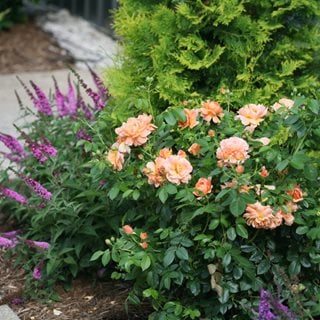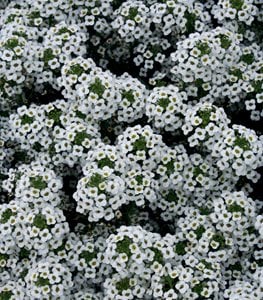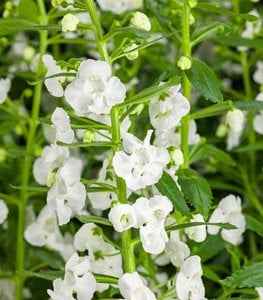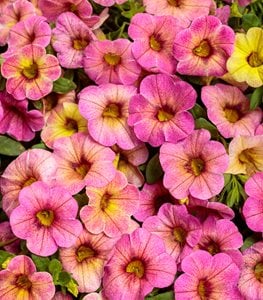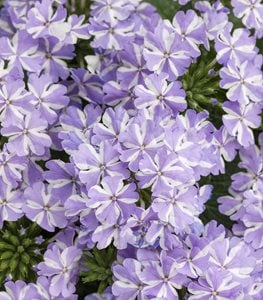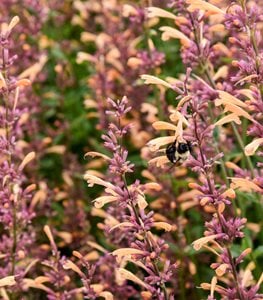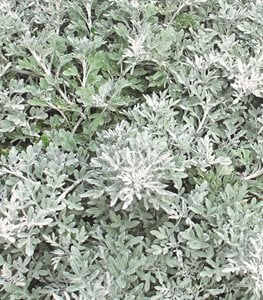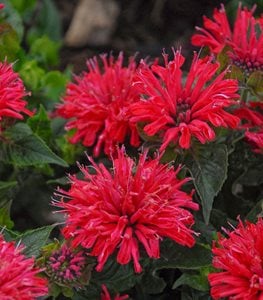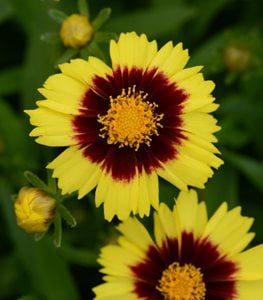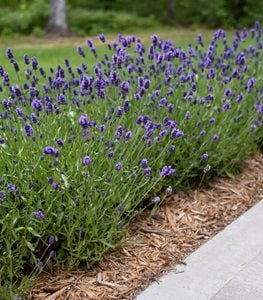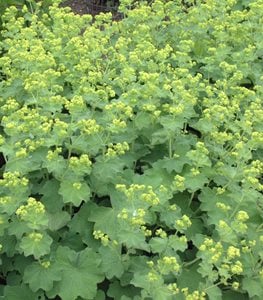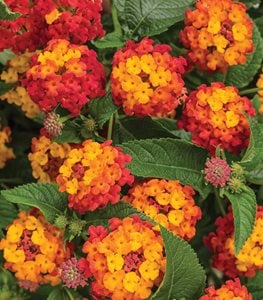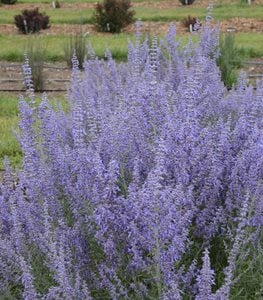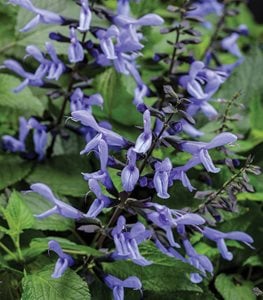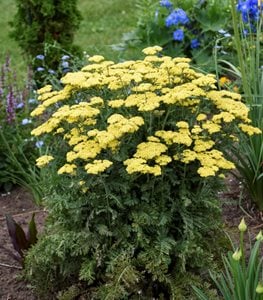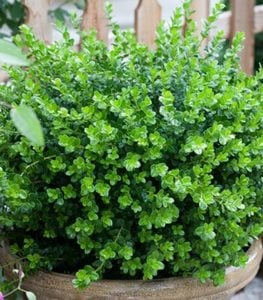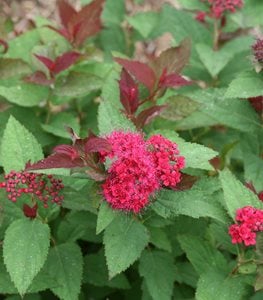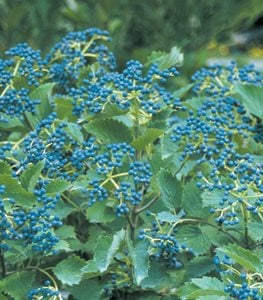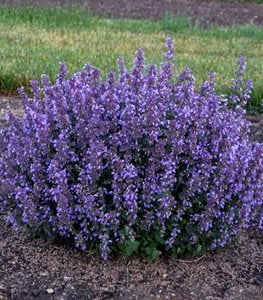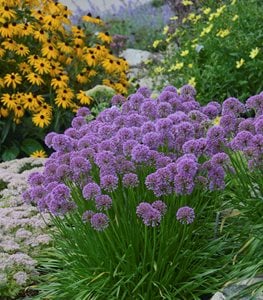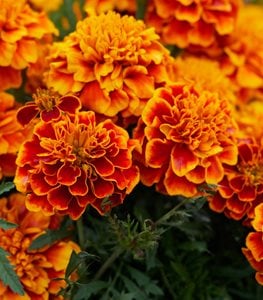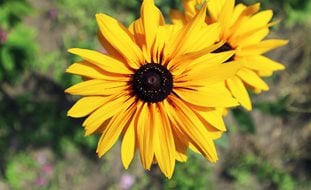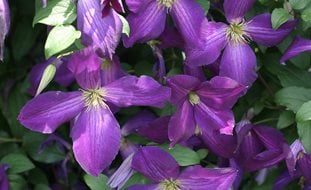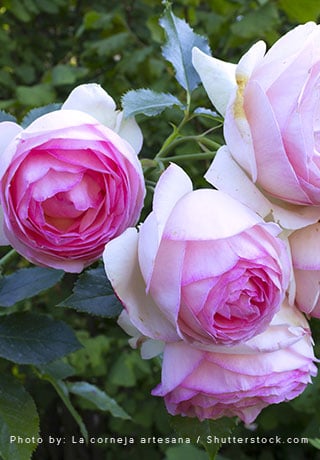What to Plant With Roses: 20 Annuals, Perennials & Shrubs
Bring out the best qualities in your roses, and even make them healthier, by pairing them up with these annuals, perennials, and shrubs.Although roses are often considered to be the divas of the flower garden, these beautiful bloomers also play well with others and can share the spotlight with aplomb. When it comes to combining roses with other plants, there are many that make great costars. Some offer a welcome contrast in color, texture, and form. Others are beneficial to rose health by warding off pests and attracting beneficial insects. And many are great gap fillers, putting on a display of colorful flowers and foliage during the interludes when roses are not in bloom.
The most important rule to follow when choosing companion plants for roses is to make sure they have similar growing requirements in terms of water, fertilizer, soil, and sun exposure. Also look for well-behaved plants that won’t aggressively compete with your roses or detract from their beauty. Even considering these constraints, that still leaves you with a long list of potential rose-friendly companions. Here are a few of our favorites, along with advice on certain plants you should keep out of your rose garden.
On this page: Annual Companions | Perennial Companions | Shrub Companions | Pest-Control Companions | What Not to Plant with Roses
On this page:
- ANNUAL COMPANIONS FOR ROSES
- PERENNIAL COMPANIONS FOR ROSES
- SHRUB COMPANIONS FOR ROSES
- PEST-CONTROL COMPANIONS FOR ROSES
- WHAT NOT TO PLANT WITH ROSES
ANNUAL COMPANIONS FOR ROSES
SWEET ALYSSUM (Lobularia maritima)
Exposure: Full sun
Height/Spread: 4 to 10 inches tall, 10 to 48 inches wide
Bloom time: Spring until the first hard frost
Tiny honey-scented blooms in soft shades of white, pink, rose, and lavender create a beautiful floral carpet around the base of roses while adding an intoxicating fragrance. Unlike sweet alyssums of the past, newer hybrids bloom nonstop and need no deadheading. Learn more about growing sweet alyssum.
ANGELONIA (Angelonia spp. and hybrids)
Exposure: Full sun
Height/Spread: 1 to 3 feet tall, 1 to 2 feet wide
Bloom time: Late spring until fall
Also known as summer snapdragon, this long-blooming annual produces spires of colorful flowers all summer long, providing interest between flushes of rose blooms. The flowers are also heat resistant and thrive in full sun, making them a great choice for warmer climates. Learn more about growing angelonia flowers.
CALIBRACHOA (Calibrachoa hybrids)
Exposure: Full sun
Height/Spread: 4 to 10 inches tall, 10 to 48 inches wide
Bloom time: From planting until frost
Also called million bells, these dainty petunia look-alikes come in a wide array of flower colors and patterns and have a trailing habit that make them good space fillers between taller shrub roses. Like roses, they needed to be fertilized regularly to keep them in bloom. Learn more about growing calibrachoa plants.
VERBENA (Verbena hybrids)
Exposure: Full sun
Height/Spread: 6 to 12 inches tall, 1 to 3 feet wide
Bloom time: Spring through fall
Covered by miniature nosegays of brightly colored flowers, verbena is a charming companion plant for roses of all types and a good choice for camouflaging their bare lower branches. Varieties that bloom in shades of blue and purple partner beautifully with yellow, pink, and white roses. Learn more about growing verbena.
PERENNIAL COMPANIONS FOR ROSES
AGASTACHE (Agastache spp. and hybrids)
Zones: 5-9
Exposure: Full sun
Height/Spread: 1 to 6 feet tall, 1 to 3 feet wide
Bloom time: Summer to early fall
Also known as anise hyssop, this fragrant member of the mint family has tall spikes of tubular flowers that bloom for weeks from summer until fall. The upright form adds vertical interest to the rose garden, while the strong scent helps to repel common garden pests. Learn more about growing agastache.
ARTEMISIA (Artemisia spp.)
Zones: 3-9
Exposure: Full sun to part shade
Height/Spread: 6 inches to 6 feet tall, 1 to 12 feet wide, depending on the variety
Bloom time: Summer to fall
Plants with soft, silvery foliage, such as artemisia and lamb's ear, will accentuate the color of your roses and add welcome textural contrast. Artemisia also needs little care once established and is tolerant of heat, drought, and poor soil. Learn more about growing artemisia plants.
BEE BALM (Monarda didyma)
Zones: 3-9
Exposure: Full sun to part shade
Height/Spread: 10 inches to 4 feet tall, 8 inches to 3 feet wide
Bloom time: Late spring to fall
One of the best plants for attracting pollinators, bee balm will bring a steady parade of bees and butterflies to your rose garden while adding bright pops of color. Newer varieties, such as ‘Pardon My Cerise', have been bred for mildew resistance and have a nice compact habit. Learn more about growing bee balm.
COREOPSIS (Coreopsis spp.)
Zones: 4-9
Exposure: Full sun
Height/Spread: 6 inches (dwarf forms) to 8 feet tall
Bloom time: Early to late summer
Also known as tickseed, this stunning native prairie plant blooms prolifically all summer long, covered with daisy-like flowers in brilliant shades of yellow, red, and gold. Some varieties also have delicate, lacy foliage that adds pretty textural contrast. Learn more about growing coreopsis.
ENGLISH LAVENDER (Lavandula angustifolia)
Zones: 5-9
Exposure: Full sun
Height/Spread: 1 to 3 feet tall, 2 to 4 feet wide
Bloom time: Early to late summer
Usually lauded for its many culinary uses, lavender is also wonderful company for roses, offsetting the cup-shaped blooms with their dainty purple spires. This aromatic herb will also help keep roses healthy by repelling aphids and attracting beneficial insects. Learn more about growing English lavender.
LADY'S MANTLE (Alchemilla mollis)
Zones: 3-9
Exposure: Full sun to part shade
Height/Spread: 1 to 2 feet tall and wide
Bloom time: Late spring to early fall
Grown for its attractive scallop-edged leaves and foamy clusters of chartreuse flowers, this cottage-garden favorite looks lovely in combination with pink, red, and burgundy roses. Relatively short in stature, it can also be used as a ground cover beneath taller roses and will effectively conceal the lower branches.
LANTANA (Lantana camara)
Zones: 9-11, some act as a tender perennial in Zones 7-8, or grown as an annual
Exposure: Full sun
Height/Spread: 3 to 4 feet tall, 1 to 3 feet wide
Bloom time: From planting until frost
Available in both upright and rambling forms, these easy-care plants produce masses of colorful flowers in vibrant shades of yellow, orange, red, pink, and purple. Trailing varieties are ideal for use as a ground cover to help suppress weeds and keep the soil moist. (Note: Lantana can be invasive in some areas of Florida. Check locally before planting.) Learn more about growing lantana flowers.
RUSSIAN SAGE (Perovskia atriplicifolia)
Zones: 4-9
Exposure: Full sun
Height/Spread: 2 to 4 feet tall and wide
Bloom time: Early summer to fall
With its silvery gray-green foliage and tall stems covered in lavender-blue flowers, Russian sage is a stunning backdrop for roses and makes every bloom more vibrant. Because Russian sage has a tendency to sprawl, allow ample space between plants so they don’t encroach on your roses and steal the spotlight. Learn more about growing Russian sage.
SALVIA (Salvia spp.)
Zones: 5-9
Exposure: Full sun
Height/Spread: 1 to 6 feet tall and wide
Bloom time: Late spring to fall
When paired with roses, the spiky purple flowers of salvia (ornamental sage) add delightful diversity in color and form. The aromatic flowers and foliage are also magnets for hummingbirds, butterflies, and other pollinators. Learn more about growing salvia.
YARROW (Achillea spp. and hybrids)
Zones: 3-9
Exposure: Full sun
Height/Spread: Varies by species, ranging from 8 inches to 5 feet tall
Bloom time: Early summer to early fall
With selections ranging from low-growing ground covers to loftier plants for the back of the border, there is a yarrow for nearly any purpose. The broad, umbel-shaped blooms also come in a diverse array of colors, making it easy to find a variety that will complement roses of any hue. Learn more about growing yarrow plants.
SHRUB COMPANIONS FOR ROSES
BOXWOOD (Buxus spp. and hybrids)
Zones: 5-9 for most, with some varieties hardy to Zone 4
Exposure: Partial to full sun
Height/Spread: 1 to 20 feet tall, 2 to 8 feet wide
Mainly grown for their evergreen foliage, boxwood shrubs bring year-round color to the garden and provide structure in both formal and informal settings. Although most varieties prefer partial shade, some will tolerate full sun, making them the perfect companion plants for roses. Learn more about growing boxwood.
SPIREA (Spiraea spp.)
Zones: 4-8
Exposure: Full sun
Height/Spread: 1 to 8 feet tall, up to 6 feet wide
Bloom time: Spring, summer
One of the most popular flowering shrubs, spirea produces abundant clusters of white, light pink, or rosy red flowers over a long season of bloom. Newer cultivars not only have tidier growth habits but also more vibrant foliage, so they provide interest even when not in bloom. Learn more about growing spirea.
VIBURNUM (Viburnum spp.)
Zones: 2-11, depending on the variety
Exposure: Full sun to part shade
Height/Spread: 2 to 20 feet tall, 2 to 12 feet wide
Bloom time: Spring to summer
Viburnums offer year-round interest with spring to summer blooms, spectacular fall foliage, and colorful winter berries. Dwarf varieties are attractive interplanted with larger rose shrubs and won’t overshadow their beauty. Learn more about growing viburnum shrubs.
COMPANIONS FOR ROSE PEST CONTROL
CATMINT (Nepeta spp. and hybrids)
Zones: 3-8
Exposure: Full sun
Height/Spread: 10 to 36 inches tall, 12 to 36 inches wide
Bloom time: Late spring through summer
Catmint’s aromatic foliage fends off aphids and many other garden pests while the long-blooming flowers attract bees, butterflies, and other beneficial insects. Unlike its close relative catnip, catmint doesn’t spread aggressively and is a great filler plant between roses. Learn more about growing catmint.
ORNAMENTAL ONION (Allium spp. and hybrids)
Zones: 3-8
Exposure: Full sun
Height/Spread: 12 to 36 inches tall, 3 to 18 inches wide
Bloom time: Early summer
Like other members of the onion family, including chives and garlic, these globe-shaped beauties have a strong scent that wards off aphids. They also attract beneficial insects, such as parasitic wasps and hoverflies, that help keep insect pests under control. Learn more about growing allium flowers.
MARIGOLD (Tagetes spp.)
Zones: Annual
Exposure: Full sun
Height/Spread: 6 inches to 4 feet tall, 6 inches to 2 feet wide
Bloom time: Late spring until frost
In addition to its ornamental value, this brightly colored annual attracts beneficial insects, such as ladybugs and parasitic wasps, that prey on aphids and other unwanted garden pests. The flowers also emit a pungent aroma that may deter rabbits. Learn more about growing marigold flowers.
WHAT NOT TO PLANT WITH ROSES
A few suggestions of what not to plant with roses:
- Avoid plant companions with extensive root systems, such as large shrubs, that will deplete the soil of the resources your roses need to stay healthy. Roses, like many plants, won’t flourish if they have to compete for water and nutrients.
- Plants that naturally take over the garden, such as invasive species and aggressive self-seeders, will eventually crowd out your roses and deprive them of light and air. Roses need plenty of breathing room to maintain good air flow around them and prevent black spot and other fungal diseases.
- Although some plants naturally repel aphids, others are good at attracting them. To help keep aphids out of your rose garden, aphid magnets like cosmos, nasturtiums, flowering tobacco (Nicotiana spp.), and sunflowers should be kept at a safe distance. Learn how to get rid of aphids on roses.
- Roses require full sun (at least 6 hours daily) and well-drained soil, and so should their neighbors. While the lush foliage of shade-loving hostas and ferns may look great alongside roses in bloom, it will suffer from too much sun exposure.
